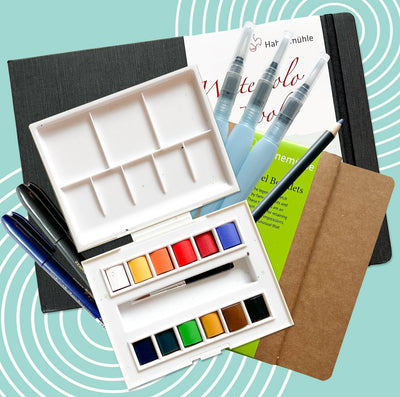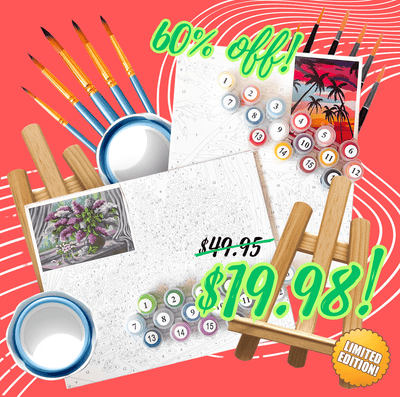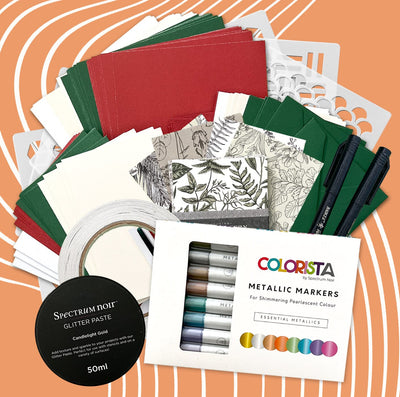When art was “invented” all those millennia ago, along with the concept of the original work of art came that of the copy or reproduction.
The Italian cast court. Photo credit: Matt From London via Visual Hunt / CC BY
At different points in time, copies have had varying degrees of value. Plaster copies of Ancient Greek and Roman marble and bronze statues were highly sought after during the fourteenth-century European Renaissance, for instance. In turn, valuable Renaissance sculpture was reproduced in the nineteenth-century age of Industrialization!
Mold Making and Casting, the techniques featured in this month’s Smart Art Box, have historically been used to duplicate works of art and other objects. But if you’ve read our last blog post you know all of this already!
This blog post takes you out of history and into the present, to give a step-by-step explanation of how to use the products in your Smart Art box to make a duplicate AND an original artwork.
Did you miss our last blog post? Never fear, here’s a reminder explaining the techniques of mold making and casting!
A mold is a block that contains a hollow cavity in a desired shape. Casting is the process of shaping liquid or a pliable material (this might be plastic, glass, metal, clay, epoxy, concrete, or plaster) by pouring it into the mold. The liquid hardens or sets inside the mold, adopting its shape. You end up with a solidified object also known as the casting. You might also need a release agent to help remove the casting from the mold.
What’s in your Smart Art Box? ComposiMold Original and lots of other goodies…
While there are many compounds used to create molds, in this box you’ll find ComposiMold. Unlike silicone molds, this rubbery thermoplastic material is 100% reusable. That’s right, you can make many casts from the same mold; and then reheat it to make different molds! It’s a fantastically inexpensive product for beginner artists and a stepping-stone to other sculpting and modeling projects. But don’t worry about cheap quality – ComposiMold has the ability to capture very fine details!
The other products in your box are ComposiStone Powder, a Prima Marketing Resin Owl, a set of Princeton Artist Brushes, Crafter’s Acrylic Black Paint and 4 bottles of Dazzling Metallics Acrylic Colors.
Photo: Earliest known casting of a copper frog, circa 3200 BC. Google Plus
Your first art project is to make a duplicate of an owl shape! Here is a step-by-step guide, all using the tools in your Smart Art Box.
If you’ve read our last blog, you’ll have learned that the earliest surviving casting discovered by archaeologists was a copper frog from 3200 B.C. Mesopotamia. We decided to draw on this prehistoric animalistic inspiration and provide you with a Prima Marketing Resin Owl to create a mold in this shape!
Mold Making: Heat – Duplicate – Release
Place the owl at the bottom of a heat safe dish with its flat side down (you can use the plastic container that the ComposiMold material comes in). Attach it to the bottom (using gum tack for example) and spray with mold release. Bubble Buster will also help decrease bubble formation in mold.
Using a microwave, slowly melt the ComposiMold in 30-second intervals, stirring gently after each time. If it begins bubbling, that means it’s too hot, and you should stir it to equalize the temperature.
*Tip: cutting the ComposiMold into small pieces using scissors before heating it to facilitate the melting process.
Next, pour the melted ComposiMold into the heat safe dish and cover the owl by at least ½” to ensure that mold ends up being thick enough for the casting process. Guide any bubbles away with a toothpick.
Let the mold cool naturally, or chill in the fridge or freezer for about 15 to 40 minutes. Remove the mold from the dish and release the owl from the mold. You may have to use a utility knife to cut an opening around the object. Then stretch the mold and carefully take the original owl out.
Photo: moldmakingstuff.blogspot.com
Casting
You’re now ready for part two, the casting process!
Pour the mold release into the hollow mold, making sure to rub it into to each nook and cranny.
Mix 2 ½ parts ComposiStone Powder to 1 part water in a disposable cup, and pour it slowly into your solidified mold. Gently tap the mold to bring any bubbles to the surface, and pop them using a toothpick. Let the stone set for 3 to 4 hours, before removing the casting from the mold, and allowing it to set overnight.
How to make that owl duplicate into your own original piece of art!
But that technique is just a base for turning a copy into something of your own creation. This can be done in many ways!
Paint it into something new
Use the selection of paints and brushes provided to make your owl come to life in your own unique way! Why not start with your Princeton Artist Brush (you’ve got three of varying sizes), adding a small amount of Crafter’s Acrylic Black Paint (dab any excess paint on a paper towel)? Using short, quick brush strokes, cover your casting in it. Add some metallic accents and sparkle with your Dazzling Metallics Acrylic Colors.
Make it new by using another casting material: what about wax, soap or chocolate for starters…?
By replacing ComposiMold with another medium, your owl can transform from a figurine into a candle (by using wax and a wick), a soap or an edible treat (we recommend chocolate!). Simply visit composimold.com for project ideas!
One final idea: jewelry for Mother’s Day!
And if you’re still not satisfied, why not try turning your owl figurine into a pair of owl earrings? Simply follow the steps above and insert metal earring hooks into your stone just before the final step of setting it. Remember that Mother’s Day is coming up…!
Share your original work on Social Media for a Prize!
Have you thought of another way to put your unique, original mark on the owl? If so, take a photo of the final product with the hashtag #smartartbox so all us can learn from you! What’s more, if you share your work with us on our Facebook page, you’ll have a chance to win a FREE Smart Art Box! The post with the most likes, comments or shares, wins on the 25th of each month.
And if you have any other questions or comments, join the conversation with other Smart Art Box artists on Twitter, Instagram, Facebook, or Pintarest – we’d love to hear from you!


